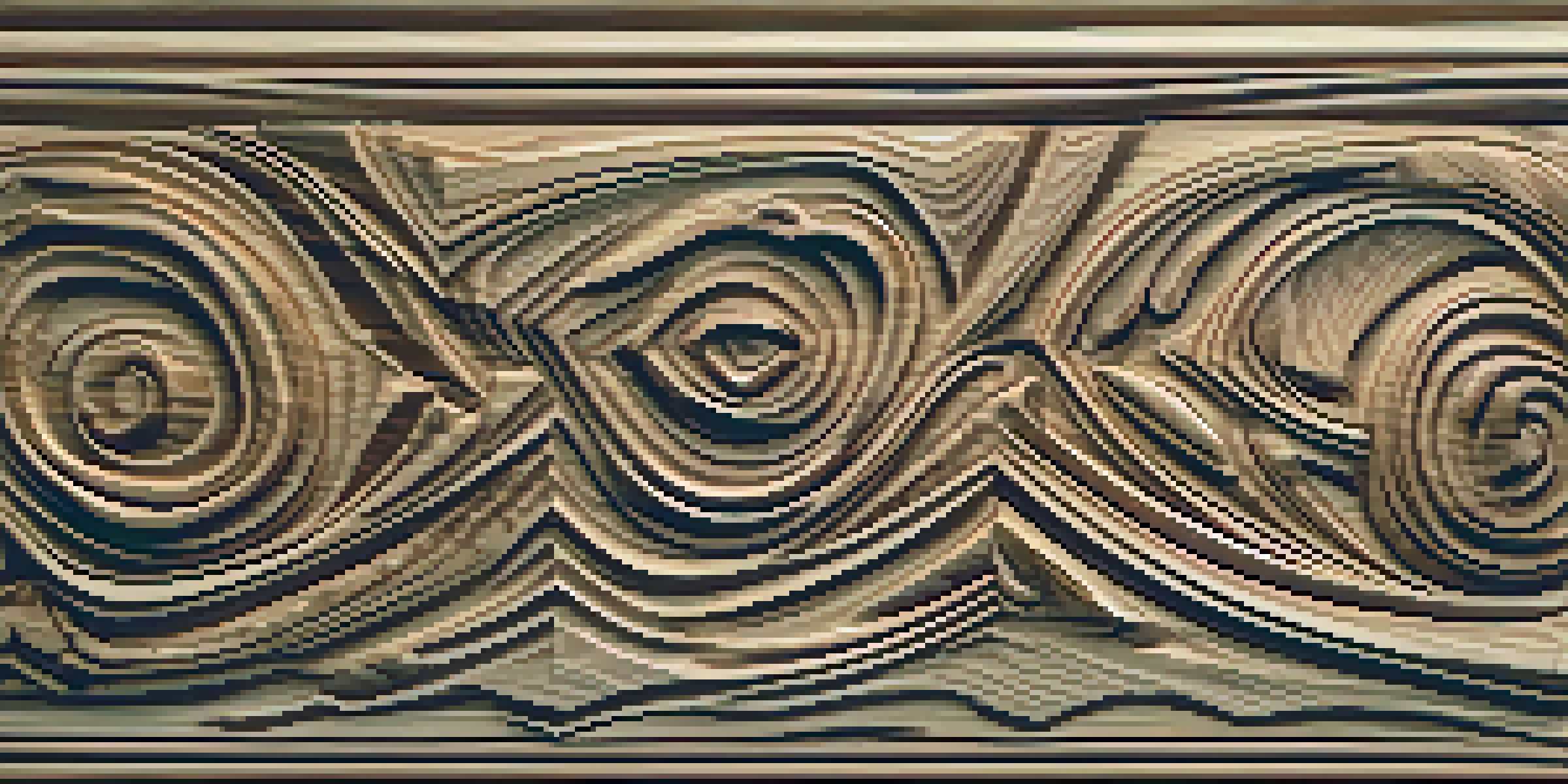Understanding Grain Direction: A Key to Successful Carving

What is Grain Direction in Wood Carving?
Grain direction refers to the alignment of the wood fibers, which can significantly impact your carving experience. Understanding this concept is crucial for anyone looking to carve wood effectively. Just like a road that twists and turns, wood grains can vary in direction, affecting the ease with which you can shape the material.
Why Grain Direction Matters for Carving
Carving with the grain allows for smoother cuts and reduces the chances of splintering. Conversely, carving against the grain can lead to rough edges and more resistance, making your work harder than it needs to be. By respecting the grain, you not only enhance your carving technique but also achieve cleaner, more professional results.
Grain Direction Affects Carving Ease
Understanding grain direction is essential as it influences how smoothly you can carve wood.
Identifying Wood Grain Patterns
Identifying grain patterns in wood can be as simple as looking closely at its surface. You might notice stripes, swirls, or even knots that indicate the direction of the grain. Taking a moment to observe these details can save you time and frustration during the carving process.
Tools and Techniques for Working with Grain
Choosing the right tools is essential when working with grain direction. For example, chisels and knives should be sharp to help glide along the grain smoothly. Additionally, using different techniques like slicing with the grain can yield better results compared to pushing against it.
Carving With the Grain is Key
Carving with the grain results in cleaner cuts and less splintering, improving overall results.
Testing the Grain Direction Before Carving
One effective way to ensure you're carving in the right direction is to test a small area first. This 'practice run' can help you gauge how the wood responds to your tools. If you notice splintering or resistance, it might be time to adjust your approach and follow the grain instead.
Common Mistakes to Avoid with Grain Direction
Beginners often make the mistake of ignoring grain direction altogether. This can lead to frustration and subpar results. By educating yourself about grain direction and its importance, you can avoid these pitfalls and enjoy a smoother carving experience.
Testing Grain Direction Saves Time
Testing a small area of wood before carving helps you determine the correct direction and avoid frustrations.
The Benefits of Understanding Grain Direction
Understanding grain direction not only improves your carving but also extends the life of your tools. When you carve with the grain, you reduce wear and tear on your tools, leading to less maintenance and longer-lasting equipment. This knowledge ultimately empowers you to take on more complex projects with confidence.
Conclusion: Embrace the Grain for Better Carving
Incorporating grain direction into your carving practice is a game changer. It enhances your skills, improves your results, and makes the process more enjoyable. So, next time you pick up your tools, remember to embrace the grain and watch your carving projects flourish.